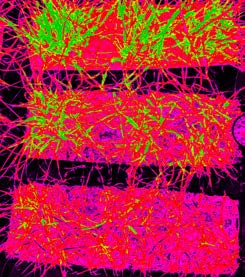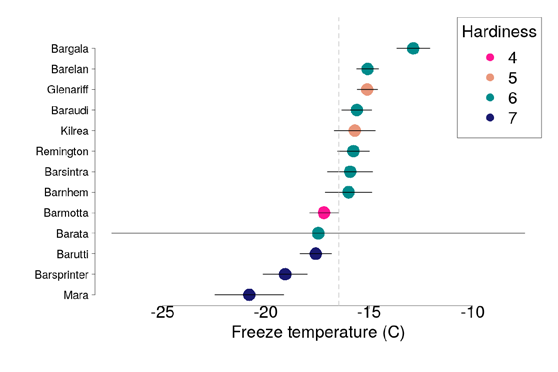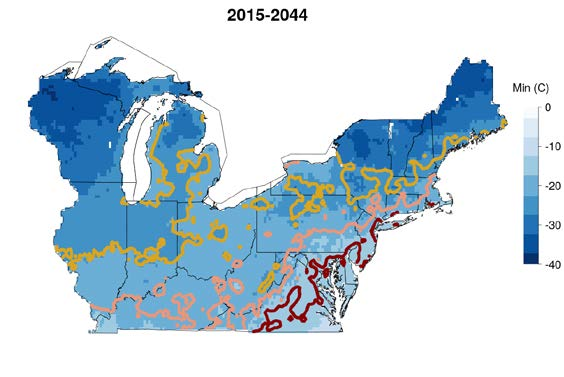PDF version with additional figures
Dr. Sarah Goslee, USDA-ARS Pasture Systems and Watershed Management Research Unit, University Park, PA 16802.
Perennial ryegrass (Lolium perenne) is productive, produces high-quality forage, and is grown in pastures world-wide. Its ability to withstand cold winters is one factor that limits its use in the northeastern United States.
We had three research questions to investigate:
- How much do cold winters limit the use of perennial ryegrass?
- Have breeding programs improved winter hardiness?
- How is the range of perennial ryegrass going to change over time?

We selected thirteen commercial varieties (Royal Barenbrug Group) of perennial ryegrass with winter hardiness ratings of 4 (least tolerant) to 7 (most tolerant). Three sets of ten seedlings of each variety were grown for two weeks, then chilled to 14F (-10C), 5F (-15C), or -4F (-20C) in a controlled environment.
We observed recovery, if any, for another 36 days. Preliminary tests showed that all varieties were killed by -13F (-25C) temperatures. We used the number of dead plants in each treatment to calculate the LT50, which is the temperature that would kill half of the plants of that variety.
The three varieties rated by the breeder as most winter-hardy rated the best in this test, but the variety rated as least hardy (Barmotta) also performed very well, surviving lower temperatures than most varieties rated hardier.

We mapped current and predicted future extreme minimum temperatures for three thirty-year periods and overlaid contour lines showing the minimum, mean, and maximum LT50 temperatures. South of the maximum, all the perennial ryegrass cultivars are likely to overwinter, and north of the minimum, none are unlikely to overwinter. Between those lines, success depends on the cultivar.

The temperature zones are expected to move substantially north during this century. By 2099, very little of the northeastern US will be too cold for this valuable forage species to persist.